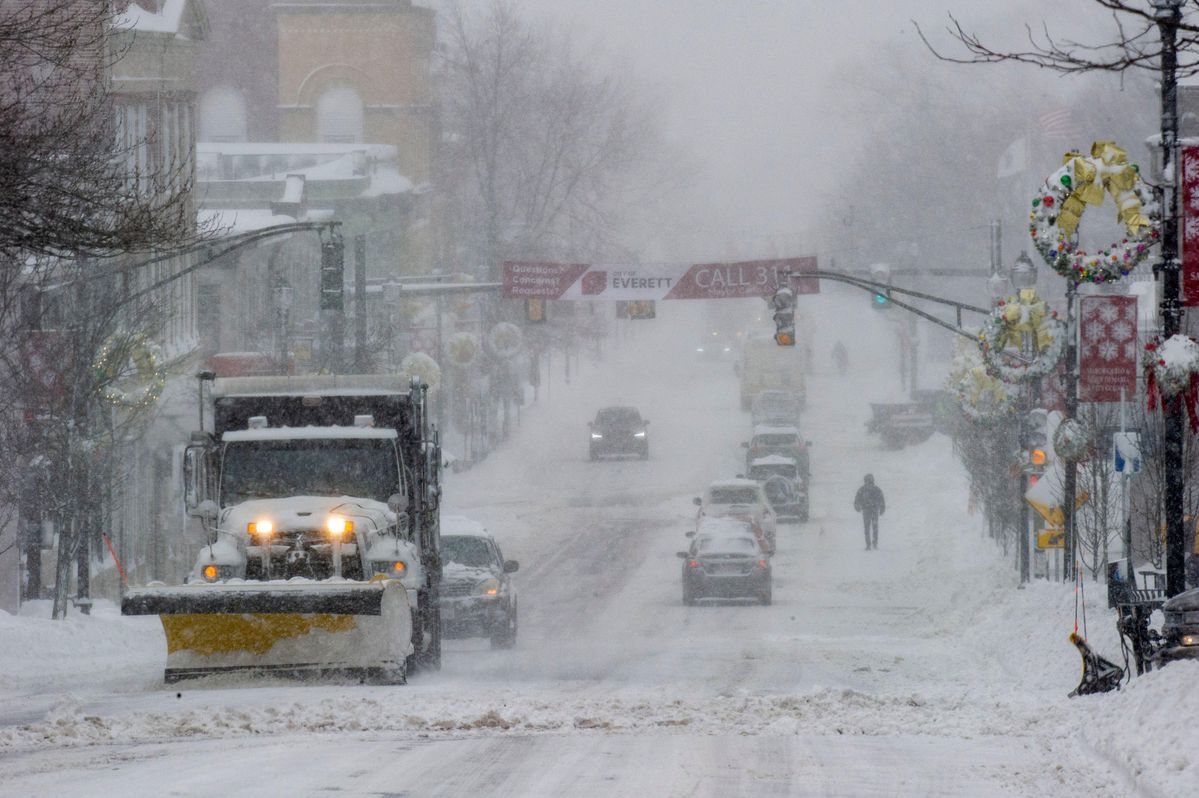To help make the most informed decisions, public works agencies rely on an ensemble of weather, data … [+]
AFP via Getty Images
It’s no secret that snow, slush, sleet, and ice can wreak havoc on roads, often creating nightmare traffic conditions. According to U.S. Department of Transportation, an estimated 544 million vehicle-hours of delay per year are due to snow, ice and fog. But more than a frustrating nuisance, adverse weather can be tied to measurable human and economic losses.
This year the pandemic has reduced daily driving time with many people working from home, but it has also increased the dependence on timely deliveries – from critical vaccination supplies to online purchases or our favorite take-out food. Ensuring that the roads are safe for these successful deliveries in winter weather is especially challenging. Transportation departments have to make confident decisions about if, when and where to treat roads, call in extra crews, and ultimately, how to keep travelers and commerce safely moving.
To help make the most informed decisions, public works agencies rely on an ensemble of weather, data and analytics, that is supplemented by other data points; known as a maintenance decision support system(MDSS). Developed by the Federal Highway Administration in 2001, MDSS integrates relevant road weather forecasts, coded maintenance rules of practice, and maintenance resource data to provide winter maintenance managers with recommended road treatment strategies, based on available resources and best practices. A pooled fund study was created in 2002 for transportation agencies to annually provide feedback and input on MDSS to continually improve the process.
While MDSS information is central to how road managers decide how and when to treat winter roads, the data collected also helps transportation agencies with other maintenance decisions. For example, data related to the weather conditions, road conditions and winter maintenance vehicle actions, such including application rate, type and plow position, can be collected from an automatic vehicle locator and mobile data technology. This information further helps with crew scheduling, tracking chemical or salt usage, and vehicle maintenance.
State and county agencies are responsible for keeping roads clear and safe for travel and collectively spend more than $2 billion every year, specifically on winter maintenance which amounts to about 20 percent of annual road maintenance budgets. Historical MDSS data helps city and state transportation departments provide rationale for how dollars are spent maintaining roads by tracking material usage during winter storm events and how to budget for future events.
A good portion the country is under winter advisories and the outlook is for a busy pattern to set up shop through most of the next two weeks. This week will open with a winter storm across the Midwest through the Mid-Atlantic and southern New England. Snow and mixed precipitation will be impacts on the cold side of the system. Severe storms will be a threat across the Southeast US on the warm side of the system.
Meanwhile, it will be a busy week of winter weather along the West Coast. Heavy rain and mountain snow will impact central California. The focus will suddenly shift from drought to heavy mountain snow, mudslides, and flooding rains. It will take until late week to bring meaningful rain and mountain snow to southern California, but when the precipitation arrives, it will likely be heavy. Eventually, the rain and mountain snow will shift into the Four Corners Region later Friday into Saturday. The system responsible will push across the Central and Eastern US this weekend and early next week. Snow and mixed precipitation will impact the Midwest and Great Lakes this weekend as a result. Mixed precipitation will be a threat Monday across the Mid-Atlantic and southern Appalachians. This storm could turn up the coast Monday night and Tuesday of next week, producing a threat of heavier snow and gusty winds across portions of the Northeast.
Yet another system will threaten the North Central US with snow during the second half of next week. This system is likely to track from the central Plains to the Great Lakes Wednesday through Friday. This should be a warmer system in the East where rain is more likely than snow. Severe weather will be a threat across the South.
The weather should settle down across the Southwest during the remainder of the first week of February. However, the busy weather pattern should continue across portions of the North Central US through the East as another system will be possible. This will cap off a challenging two-week stretch of winter weather for large portions of the country.
It is always a top priority to keep our roads safe, but with so many in the nation increasingly depending on home deliveries, it is particularly important to ensure that winter weather doesn’t cause a large delay in transport.
This article is auto-generated by Algorithm Source: www.forbes.com


